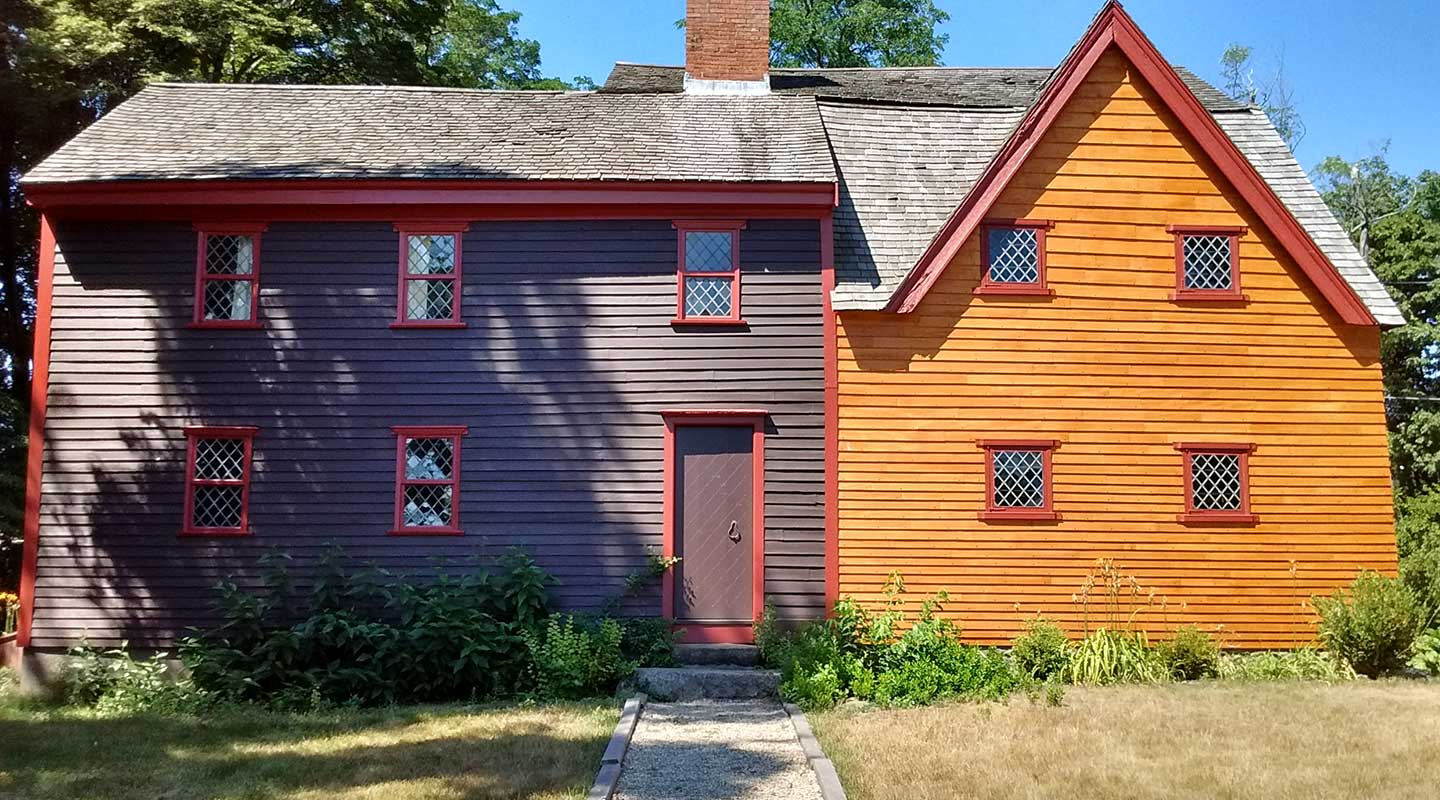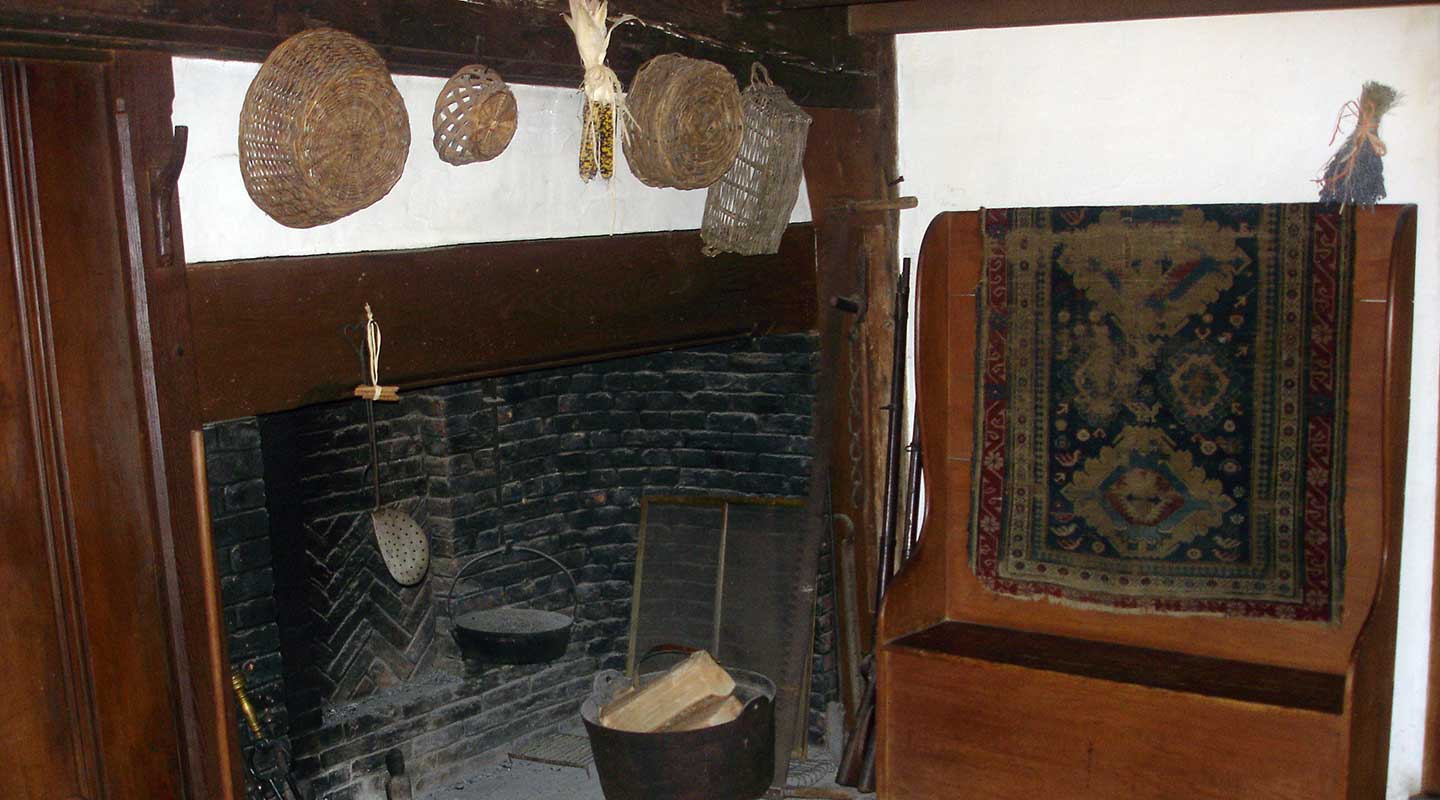John Balch was born in Bridgewater, Somerset, England in 1579
He and his first wife, Margaret, were part of a group sent to New England by the Dorchester Company to establish a fishing industry. The Dorchester Company first landed in Weymouth in 1623, then moved north to Gloucester in 1624, but the settlement there was not successful. When the company was recalled to England, the Balches, Roger Conant, John Woodbury, Peter Palfry, and others stayed in Massachusetts and moved south to Naumkeg, now Salem, in 1626.
Visit the Balch House
448 Cabot Street, Beverly
Parking
Limited parking at the site; free municipal lot adjacent on Balch Street
$5/free for Historic Beverly and Card to Culture holders and all discounts listed here
Open June 3 – September 2
Closed for the season
Preserve the Balch House for future generations
An anonymous donor has offered a $50,000 challenge match to complete restoration work on the exterior. If we meet the match, we’ll be 80% of the way towards our goal, and can finish within the next year. An update on our progress can be found in the Balch meeting report.
A fund has been established to honor longtime caretaker Nancy Peabody Hood. Gifts of any size are appreciated at Preserve the Balch House. Choose the Balch House option.
John Balch first gained title to the land through a grant – the so-called “Thousand Acre Grant” – on November 11th, 1635 and apparently was living on this property by 1636. His house was small – built a story and a half high – one large hall on the main floor plus a loft upstairs. He chose a site on a hillock that looked down on the nearby Bass River, where he had easy access to salt marsh and to his pasture land and orchards.
The Balch family lived on the property beginning in 1636. The earliest part of the current structure dates to 1679.
Through combinations of luck and foresight, the Balch House has survived while the hundreds of homes from the same era have fallen to progress or decay. The hero was William Sumner Appleton, a member of the Balch Family Association and Director of the Society for the Preservation of New England Antiquities (SPNEA). Fearing loss of the house, he formed the Balch House Trust to purchase the home, joined by Charles Knowles Bolton, President of SPNEA, and Franklin Balch. The Trust turned over the house to the Beverly Historical Society in 1932.
The house as we see it today is a product of its restoration as much as its origins. The house is composed of structures from three architectural periods. The 1680s northeast portion, likely built by Benjamin Balch, is a rare example of a 17th century one and one-half story dwelling. In 1721 this early structure was incorporated into a larger two -story addition to the south. The 17th century structure was raised to a full two stories and with the chimney added to the north end of the 18th century addition; the transformation to a typical five bay colonial was complete. In the late 18th or early 19th century a large addition was added on the west side. The Balch Family Association purchased and took possession of the Balch House in 1916. Upon council from Norman Isham and William Sumner Appleton the house was “restored” and interpreted to reflect its three distinct architecture periods. It thus became an icon of the colonial revival period’s approach to historic preservation. Over the years the vision and philosophy of this early restoration has been clouded by expedient repairs and philosophically dubious alterations. Historic Beverly has begun a program to restore the Balch House to the vision of Isham, Appleton and the founders of the Balch Family Association.
Balch descendants (and others) may join the Society as a Balch House Associate to indicate their particular interest in the house.
The Balch House is evocative of early colonial life. It is open to the public seasonally, and is the site of the biennial Balch Family Meeting. The next meeting will be in September, 2022.
Join Historic Beverly as a Balch House Associate

